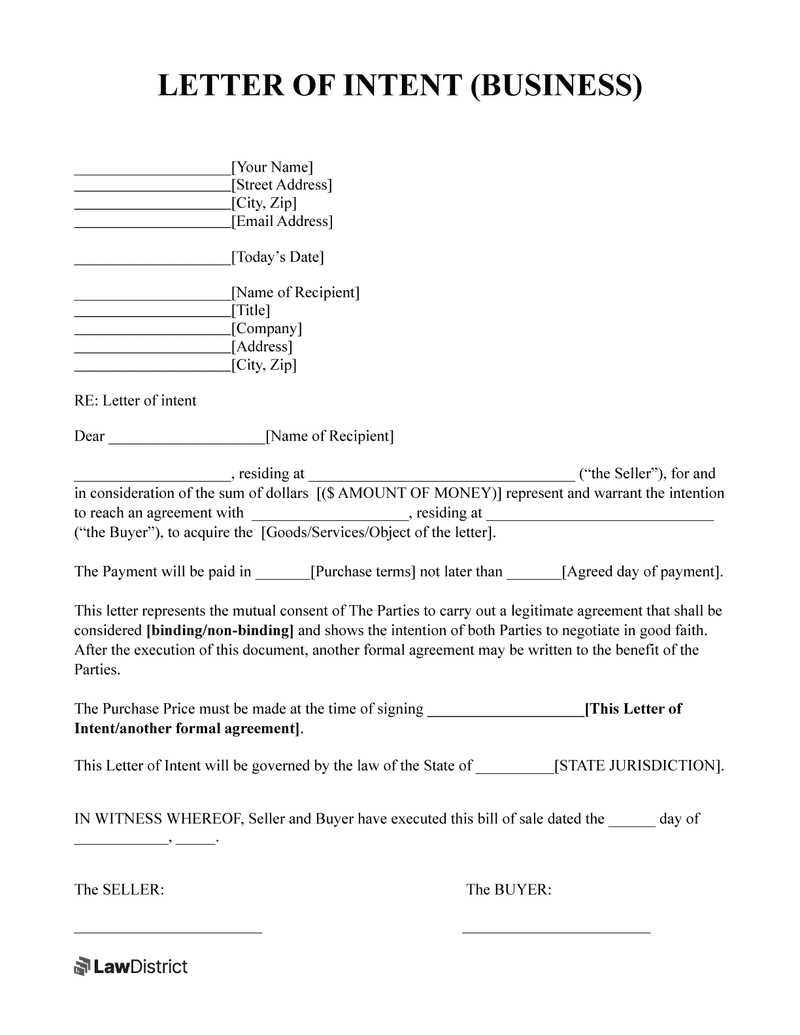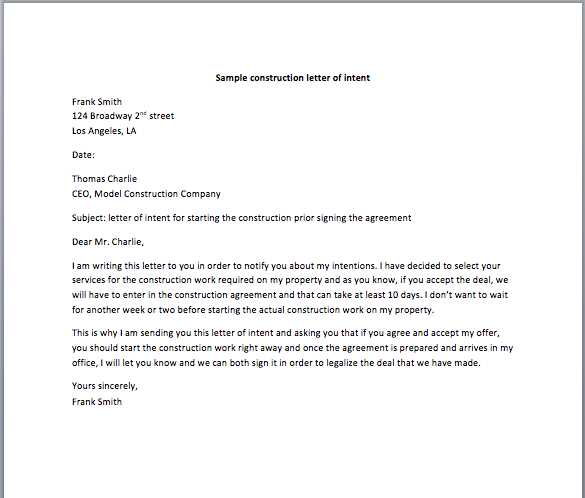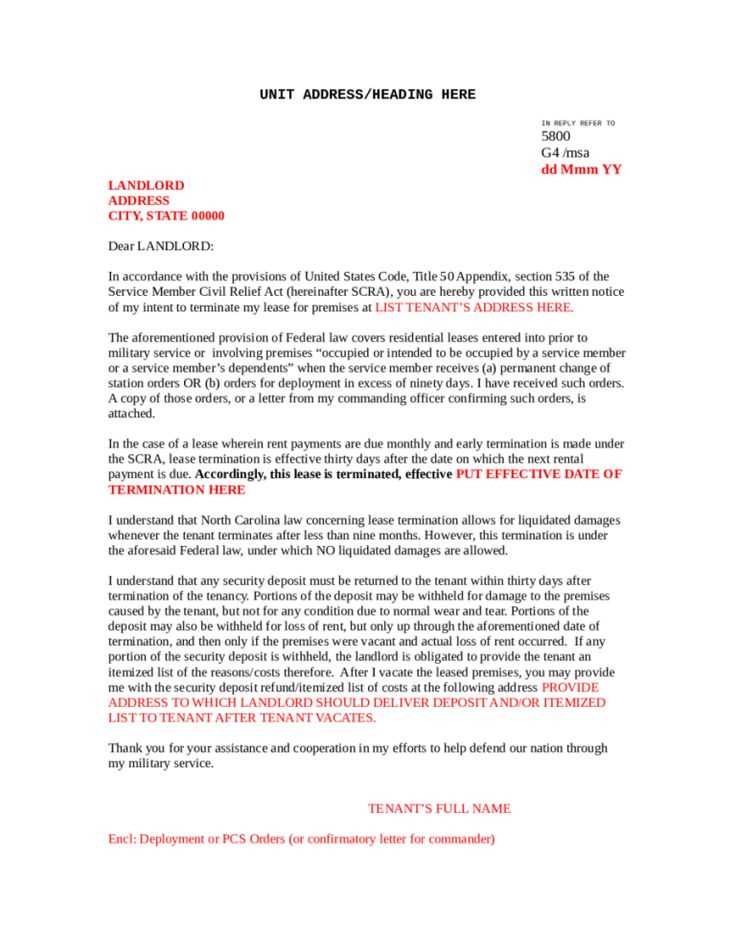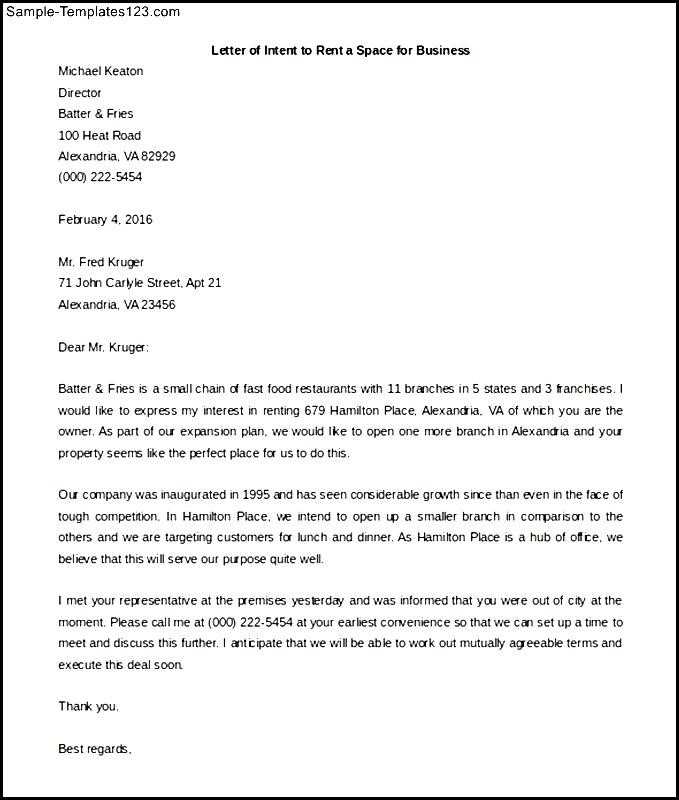Letter of intent to occupy template

Creating a letter of intent (LOI) to occupy a property is an important step in securing space for your business or personal use. This letter outlines your intention to lease or rent a property and provides the landlord or property owner with essential details. Below is a clear template for crafting your own letter.
Key Components of an LOI to Occupy

While every letter may vary, the following sections are commonly included to ensure that your LOI is clear and professional.
1. Contact Information

Begin with the name, address, and contact details of both the tenant (you) and the landlord or property manager. This establishes the relationship and ensures both parties know who to communicate with.
2. Property Details
Clearly identify the property in question. Include the full address and any relevant property description, such as square footage, floor level, or any unique features that matter to the arrangement.
3. Lease Terms

Outline the proposed lease terms, including the duration of the lease, monthly rental amount, payment method, and any other financial obligations. Be clear about the proposed start and end dates of the lease.
Template Example
Below is a template that you can use for your LOI to occupy a property:
[Your Name] [Your Address] [City, State, ZIP Code] [Phone Number] [Email Address] [Date] [Landlord's Name] [Landlord's Address] [City, State, ZIP Code] Dear [Landlord's Name], Subject: Letter of Intent to Occupy [Property Address] I, [Your Name], am writing to express my intention to occupy the property located at [Property Address]. I have reviewed the terms of the lease and wish to proceed with the following: 1. Lease Term: [Insert term of lease, e.g., 1 year] 2. Rent: [Insert rent amount, e.g., $2,000/month] 3. Start Date: [Insert proposed start date, e.g., March 1, 2023] 4. End Date: [Insert proposed end date, e.g., February 28, 2024] 5. Security Deposit: [Insert security deposit, if applicable] 6. Use of Premises: [Describe the intended use of the property, e.g., office space for business operations] 7. Additional Terms: [Optional: Any other terms or considerations that are important to include] Please consider this letter as a formal expression of my intent. I would appreciate the opportunity to meet and discuss the next steps, including reviewing the lease agreement. Thank you for your time and consideration. I look forward to your response. Sincerely, [Your Name]
Final Thoughts
Make sure to keep your letter concise and professional. Double-check all the details to avoid misunderstandings later. If you need assistance, consider seeking legal or professional help to ensure your letter reflects your intentions accurately.
Letter of Intent to Occupy Template: A Practical Guide
Understanding the Purpose of a Letter to Occupy
Key Information to Include in Your Intent Letter
How to Structure the Date and Involved Parties
Important Terms and Conditions to Consider
Common Pitfalls to Avoid When Drafting the Letter
Next Steps After Submitting Your Intent Letter

Begin with a clear statement of your intent to occupy the premises. Mention the specific property, the expected start date of occupancy, and your intended use of the space. This sets the tone and context for the entire document.
Include the names and contact information of all parties involved. This should be precise–list the full names of the landlord or property owner and the tenant (you, or the company), along with relevant addresses, phone numbers, and email addresses. This ensures clarity and avoids confusion later on.
Ensure you specify the terms of the lease or rental agreement, even if these are preliminary. Include the lease duration, rent amount, and any additional costs such as utilities, maintenance, or parking fees. If any of these terms are negotiable, indicate that as well.
The date should be clearly marked at the top of the document, immediately after the title. You’ll also want to specify the expected move-in date to ensure all parties are aligned on timelines. Make sure to use a format that is universally understood (e.g., MM/DD/YYYY).
List any important conditions that need to be addressed, such as security deposits, renovations, or modifications to the property. These may impact the move-in process and should be clearly laid out to avoid future disagreements.
Watch out for vague language in your letter. Avoid over-generalizing terms such as “soon” or “as agreed upon” without specifying exact dates, amounts, or actions. Ambiguity can lead to misunderstandings later on.
After sending the letter, stay proactive. Once the landlord acknowledges your letter of intent, follow up to discuss next steps such as drafting the formal lease agreement. Ensure that all agreed-upon details are reflected accurately in the final contract.